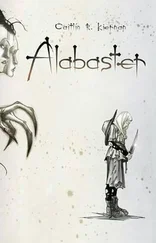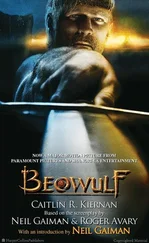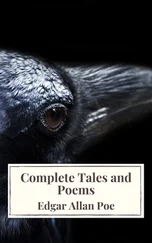Caitlin R. Kiernan - The Red Tree
Здесь есть возможность читать онлайн «Caitlin R. Kiernan - The Red Tree» весь текст электронной книги совершенно бесплатно (целиком полную версию без сокращений). В некоторых случаях можно слушать аудио, скачать через торрент в формате fb2 и присутствует краткое содержание. Жанр: Ужасы и Мистика, на английском языке. Описание произведения, (предисловие) а так же отзывы посетителей доступны на портале библиотеки ЛибКат.
- Название:The Red Tree
- Автор:
- Жанр:
- Год:неизвестен
- ISBN:нет данных
- Рейтинг книги:3 / 5. Голосов: 1
-
Избранное:Добавить в избранное
- Отзывы:
-
Ваша оценка:
- 60
- 1
- 2
- 3
- 4
- 5
The Red Tree: краткое содержание, описание и аннотация
Предлагаем к чтению аннотацию, описание, краткое содержание или предисловие (зависит от того, что написал сам автор книги «The Red Tree»). Если вы не нашли необходимую информацию о книге — напишите в комментариях, мы постараемся отыскать её.
The Red Tree — читать онлайн бесплатно полную книгу (весь текст) целиком
Ниже представлен текст книги, разбитый по страницам. Система сохранения места последней прочитанной страницы, позволяет с удобством читать онлайн бесплатно книгу «The Red Tree», без необходимости каждый раз заново искать на чём Вы остановились. Поставьте закладку, и сможете в любой момент перейти на страницу, на которой закончили чтение.
Интервал:
Закладка:
After the house, I peeked into the sagging, dilapidated barn, and a couple of the other outbuildings, before following one of the fieldstone walls seventy-five yards or so to that enormous red oak [4] Quercus rubra (= Q. borealis ), known as the Northern Red Oak and Champion Oak; also see Donald Cultoss Peattie’s A Natural History of Trees of Eastern and Central North America (Houghton Mifflin Co., 1950, with a 2nd ed. in 1966).
that had formed so much of Sarah Crowe’s fatal obsession. Along the way, I noted that a break in the wall, mentioned repeatedly by Sarah, had recently been repaired. Far more than the house and the surrounding landscape, the tree, and what I found near it, made an impression on me. To whatever degree she might have hallucinated, imagined or exaggerated her experiences at the Wight Farm, I can say with certainty that she did not overstate the imposing presence of this one tree. It stands at least a hundred and thirty feet tall, and at the base its trunk is easily six feet in diameter [5] These measurements were given me by Mr. Samson Blanchard, a few weeks after my visit.
,dwarfing all other trees in the vicinity. I will not here waste time describing the tree itself, as Sarah’s manuscript does a far better job of that than I ever could. The branches seemed very stark that day, very grimly drawn against that April sky, despite a cheery spray of new leaves coming in. But, again, I’d cite my expectations, more than any objective attribute of the tree itself, as the source of this impression. Here and there, names and dates had been carved into the bark. The oldest that I spotted was from 1888 (which Sarah also mentions), but there may well have been much older graffiti that I missed.
Set out about the circumference of those gnarled roots, I found many dozens of small glazed ceramic figurines, mostly of the exact sort one gets free inside boxes of Red Rose teabags [6] Manufactured by George Wade Pottery in Burslem, Staffordshire, England, Red Rose Tea has included these “whimsies” since 1967, beginning as a short term pro motion in Quebec. The first American figures were offered in 1983. To quote the company’s website, “To date, it is estimated that more than 300 million Wade figurines have been given away in packages of tea in America.” See also The World of Wade by Ian Warner and Mike Posgay (Schiffer Publishing, 2003).
.There were animals, circus performers, and characters from nursery rhymes, some balanced on the knotty wood, or tucked into crevices in the bark, others set out on the mossy ground surrounding the oak. It was an unexpected and startling sight, and I stood there for some time, studying the figurines. I did not take any of them away with me, or even touch them, thinking that, perhaps, they had been left here by the Blanchards’ grandchildren, who I understand frequently visit and have been known to wander as far as the Wight place. There was something reminiscent of a shrine or reliquary in the arrangement of the tiny ceramic animals, which are never mentioned in Sarah Crowe’s manuscript. I assume, therefore, that they were placed here following her death. I’d forgotten my camera that morning, so I am forced to rely on memory, but two of the figurines I recall quite clearly — a sepia-colored rabbit and a pinkish wild boar, both date back to the very first American series of animal figurines offered by Red Rose Tea (1983–1985). At any rate, dusk was coming on fast, and I still had to cross the rickety bridge and then navigate the rutted dirt path leading back to Barbs Hill Road and Moosup Valley. By the time I got to the Jeep, the air was filled with the eerie calls of owls and other night birds, and I was glad that I had not lingered longer at the red oak. I made it back to New York around ten-thirty that evening.
And that was my pilgrimage, the dues I felt that I should pay before the privilege of writing this preface. And, now, having written it down, the day seems even more unremarkable and underwhelming than before. The mystery posed by the final months of Sarah’s life, the red oak, and the manuscript she left behind are to be found in the pages that follow, not this account of my “legend-trip” to the Wight Farm.
I must also confess that I still do not fully understand the circumstances that led to that odd typescript landing on my desk, hardly a month after her funeral. It was wrapped in brown butcher’s paper and bore a Providence postmark, but no return address. In fact, it was accompanied by no cover letter, nor word of explanation whatsoever. Having served as her editor on two novels, and having considered Sarah — if not a close friend — at least a good acquaintance, part of me wished that the whole thing would quickly prove to be no more than an elaborate hoax.
But as I read it, I recognized her there on every page. Even if, for whatever reason, some other author had perfectly aped her voice, most of the pages bear notes and proofreader’s marks in Sarah’s own unmistakable handwriting. Regardless, I requested that it be examined by a graphologist certified by the American Board of Forensic Document Examiners, Inc., who concluded, without any reasonable doubt, that Sarah Crowe did, in fact, produce at least the handwritten portion of the manuscript. I also discovered several pages bearing distinct fingerprints, presumably made when a ribbon in the old typewriter was being changed, and submitted those for fingerprint analysis by a private investigator (name withheld by request). Again, the results were positive. So, regardless of whether or not she actually conceived and composed The Red Tree, there can be very little doubt that she did, in fact, frequently handle the typescript and make notations to it. Ergo, if this is an elaborate forgery, it’s one she literally had a hand in.
That last summer of her life, Sarah Crowe lived in a self-imposed seclusion, only infrequently reaching out to make contact with others. A few calls to her agent, a handful of emails to me, asking for more time on a long overdue and never completed novel. She had become, like the heroines of her novels, a haunted woman, drawing in upon herself, shutting away the world, wrapping herself ever more tightly in what I am forced to concede were shrouds of delusion and depression. A lifelong Southerner (who frequently claimed to loathe everything about the South), she abruptly fled to rural Rhode Island, seeking, perhaps, a new beginning. Perhaps peace. Perhaps some closure to what she saw as a chaotic and misspent life. There is never any definitive, conclusive statement in The Red Tree, only frustrating hints. We know that she had recently been diagnosed with a chronic neurological disorder that caused seizures and that may or may not have been a form of epilepsy. We know her tumultuous relationship with “Amanda Tyrell” [7] Sarah chose this pseudonym for her former lover, and I have chosen to respect her decision to do so by never using “Amanda’s” true name. However, it is not difficult to learn, if one is so disposed.
had come to an ugly end, and that Sarah blamed herself for not having managed to somehow save her lover. We know that she was unable to write a contracted novel, and that she eventually found herself writing The Red Tree, in journal form, instead. Once a sociable, outgoing woman, at the end she’d become withdrawn and secretive. She was only rarely seen by either the Blanchards or the people of Moosup Valley. We know how she died, and that a coroner’s inquest ruled her death to be a suicide. We know that Sarah had always had a violent disdain for her own work, referring to it, for example, as “tiresome hackery” [8] Atlanta Journal-Constitution, December 14, 2001.
and “genre drivel.” [9] Publishers Weekly, March 3, 1999.
And we know that the generally positive reviews and the praise of her peers did little to change this opinion, which seems to have been bolstered by the poor sales of her novels. In the end, this amounts to very little, this rough assortment of facts, and a poor way to sum up a life. But, then, I must remind myself this is not a eulogy I am writing, but a preface to a very odd book.
Интервал:
Закладка:
Похожие книги на «The Red Tree»
Представляем Вашему вниманию похожие книги на «The Red Tree» списком для выбора. Мы отобрали схожую по названию и смыслу литературу в надежде предоставить читателям больше вариантов отыскать новые, интересные, ещё непрочитанные произведения.
Обсуждение, отзывы о книге «The Red Tree» и просто собственные мнения читателей. Оставьте ваши комментарии, напишите, что Вы думаете о произведении, его смысле или главных героях. Укажите что конкретно понравилось, а что нет, и почему Вы так считаете.












